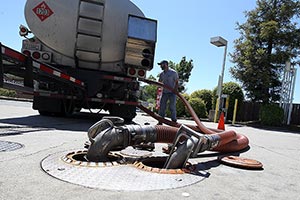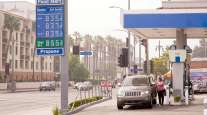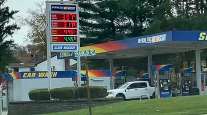Soaring Gasoline Demand Isn't Enough to Stop Supply Glut

The biggest increase in U.S. gasoline demand in almost 40 years hasn’t been enough to keep storage tanks from filling up.
Gasoline imports into the U.S. East Coast are near the highest in seven months and American refiners have maximized gasoline output as diesel margins falter. That’s helped push inventories in the region up by 3.68 million barrels over the past two weeks to the highest seasonal level in three decades, during a period when supplies typically decline.
Refiners across the U.S. had been flying high on cheap oil and strong demand, pumping out fuel at record rates and reaping healthy margins. Now, a 67% rally in crude since mid-February has increased costs, while tankers sailing from Europe and elsewhere are flooding New York Harbor, the delivery point for futures contracts. Profits for processing crude into gasoline have fallen for six days in a row to $18.66 a barrel, down $2.99 from a in late April, based on futures prices.
"We have to start drawing inventories at some point, otherwise the margin situation is going to deteriorate pretty quickly," said Sam Margolin, lead analyst at Cowen & Co. If inventories build for another six to eight weeks, "at some point runs are going to be cut."
U.S. gasoline demand rose by 556,000 barrels a day in February, according to the Energy Information Administration, the biggest annual increase since May 1978. The trend has continued, the latest weekly figures show. But the demand is starting to be overwhelmed by imports that last week that were more than 50% higher than a year ago.
The narrower margins are weighing on refiners’ earnings and outlooks. The BI North America Refining & Marketing index is down 27% this year — and none of its companies have year-to-date gains.
HollyFrontier Corp. posted a surprise loss of 9 cents a share, compared with the average estimate of a 7-cent per-share profit. HollyFrontier pointed to $36 million in losses related to federally mandated ethanol blending. Since oil prices have plunged, adding the octane-enhancing blendstock no longer helps the bottom line.
Phillips 66’s 61% drop in earnings was driven by lower gasoline and distillate margins globally. While the company expects strong summer gasoline demand, CEO Greg Garland said supply will keep pressuring margins.
Gasoline traders, during the week beginning May 1, watched the spread between June and July futures prices flip into contango from backwardation. Now contracts for near-term delivery are weaker, indicating that the market is well supplied and prices could fall further.
The import surge in the second half of April could have been caused by a continuation of a floating storage play in Europe, said Eric Rosenfeldt, vice president of supply and trading at Papco Inc. in Virginia Beach, Virginia.
"The floating storage of gasoline that was taking place in Europe was summer grade," he said. "Unwind of that trade is still happening."




